We often might find ourselves using different axes in our visualizations but what is the difference between them and are there any advantages of one over the other?
What is dual axis
Dual axis chart is a type of chart that has two independent axes, they can be synchronised to display data more accurately and two measures can be plotted on the chart.
In the beginning when displaying measures they will not be on the same chart, as at that moment they aren't linked through a dual axis or are using a shared axis, for example:
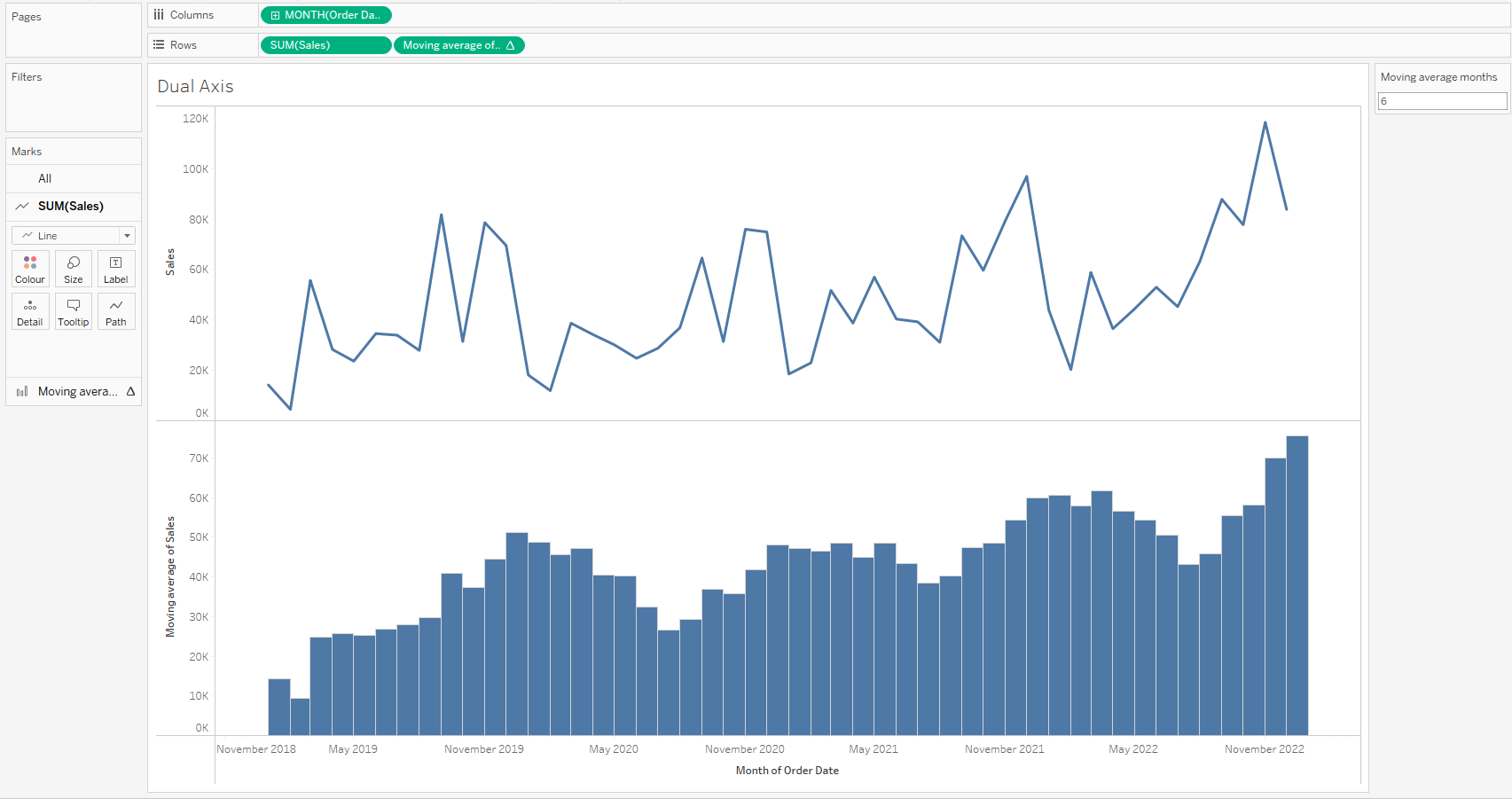
They would initially have two different charts for each measure independently, but it is possible to right click on the axis below the top chart and to make them into a dual axis, thus putting them on the same plane of view (example 2).
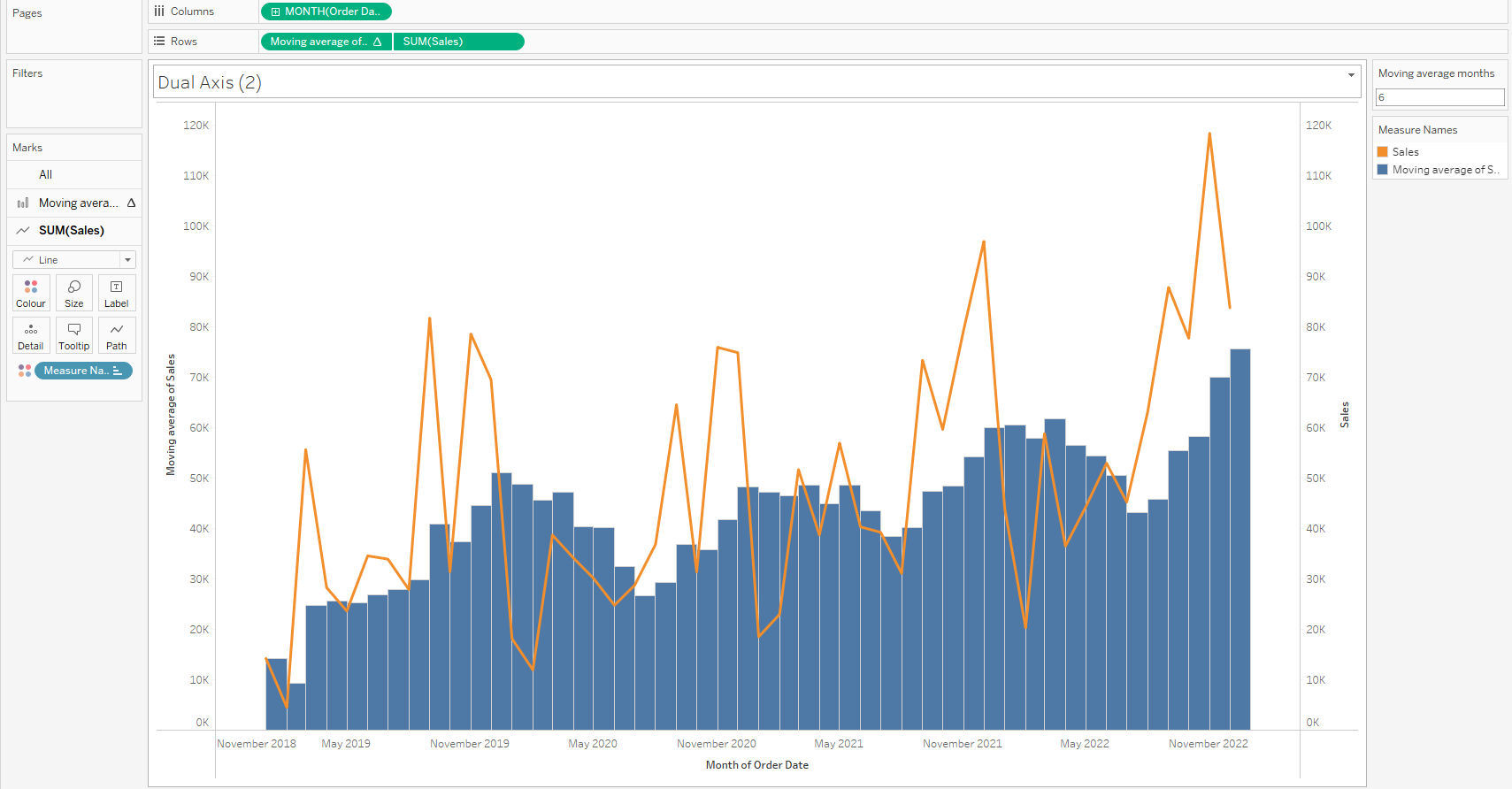
The advantage of this type of axis is that you will have multiple marks cards to give the graphs more individuality and separate them by different visualization (line and bar as an example). It is also possible to hide one of the axes, but that the chart is dual is a small extension at the bottom right corner marked by a red circle (example 3)
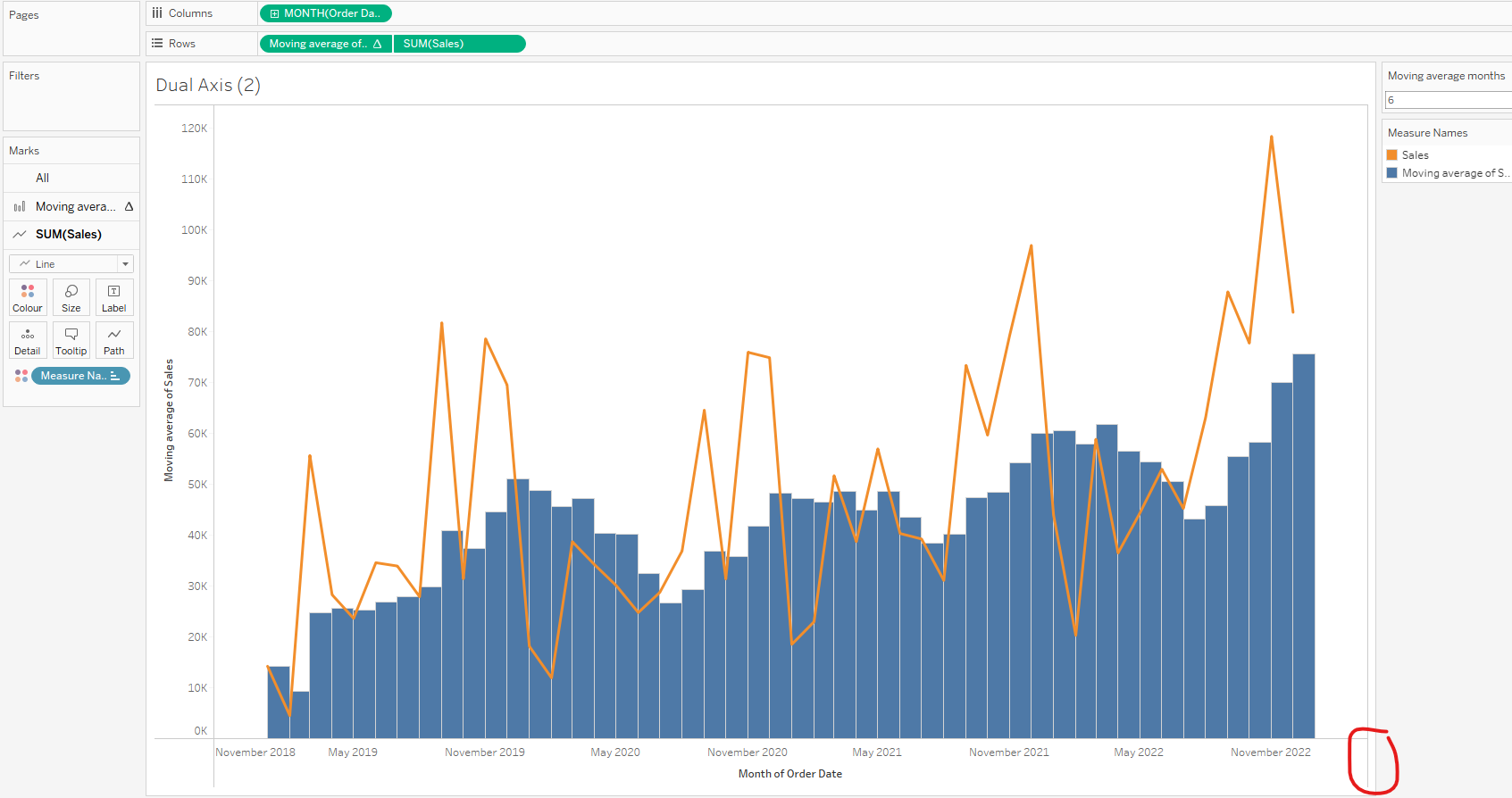
It also has some disadvantages the main drawback is that you can only "dual axis" once, which limits the amount of information one can display on the chart. That's about all about dual axis.
Now what are shared axis?
A shared axis merges two or more measures into a single axis, therefore it is possible to show as many measures as one wants (Example 4).
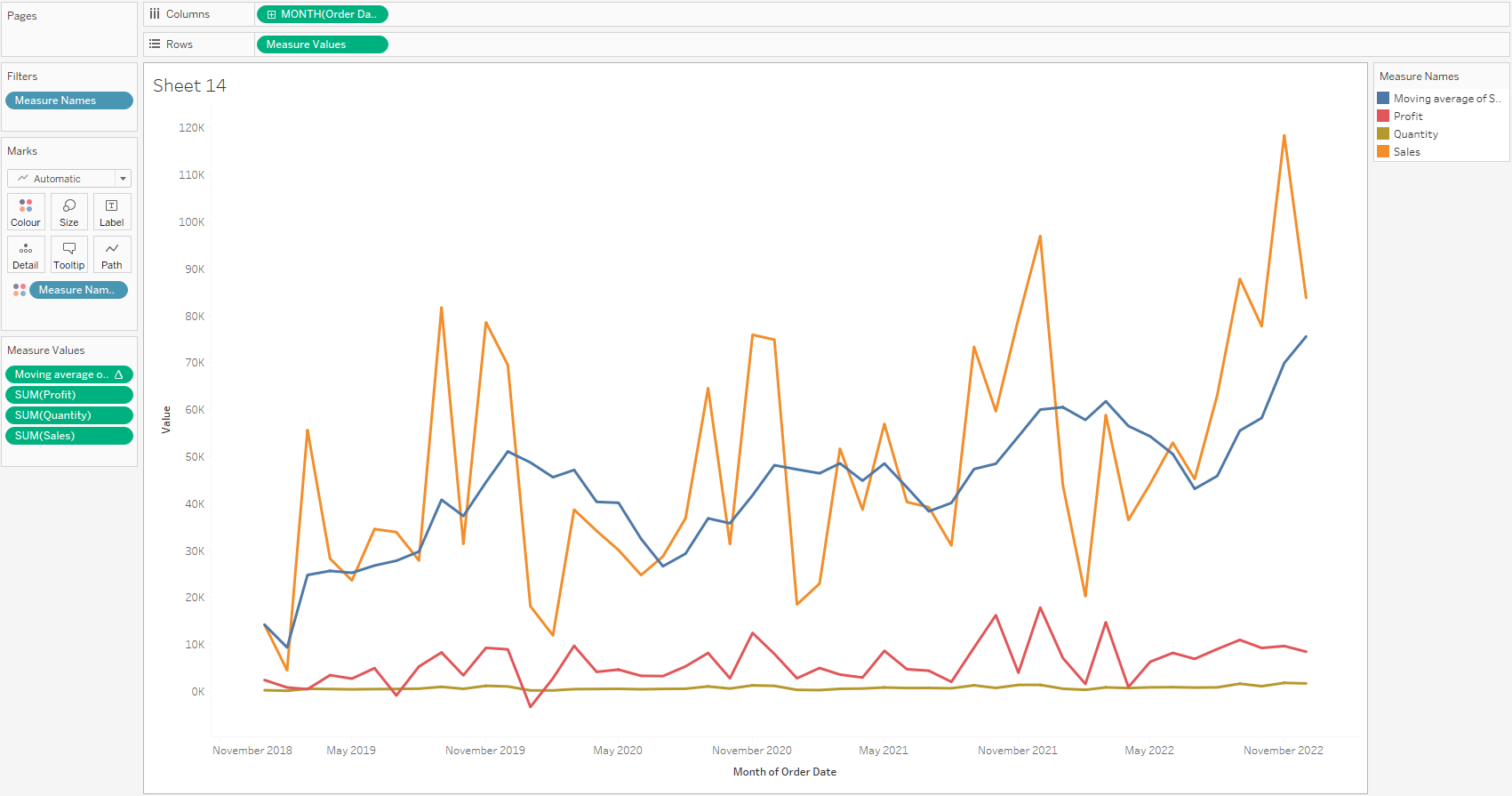
Unfortunately, that's about the only main advantage of a shared axis, as it allows us to plot a lot of different measures. The disadvantage would be that you do not have two marks cards and all the graphs are acting upon single marks card, which can make it hard to make the information more "individualized".
There is a way to have a shared axis with dual axis though, by bringing in a measure outside of "measure names" and choosing to create a dual axis, this gives the several marks cards back in order to visualize information better (Example 5).
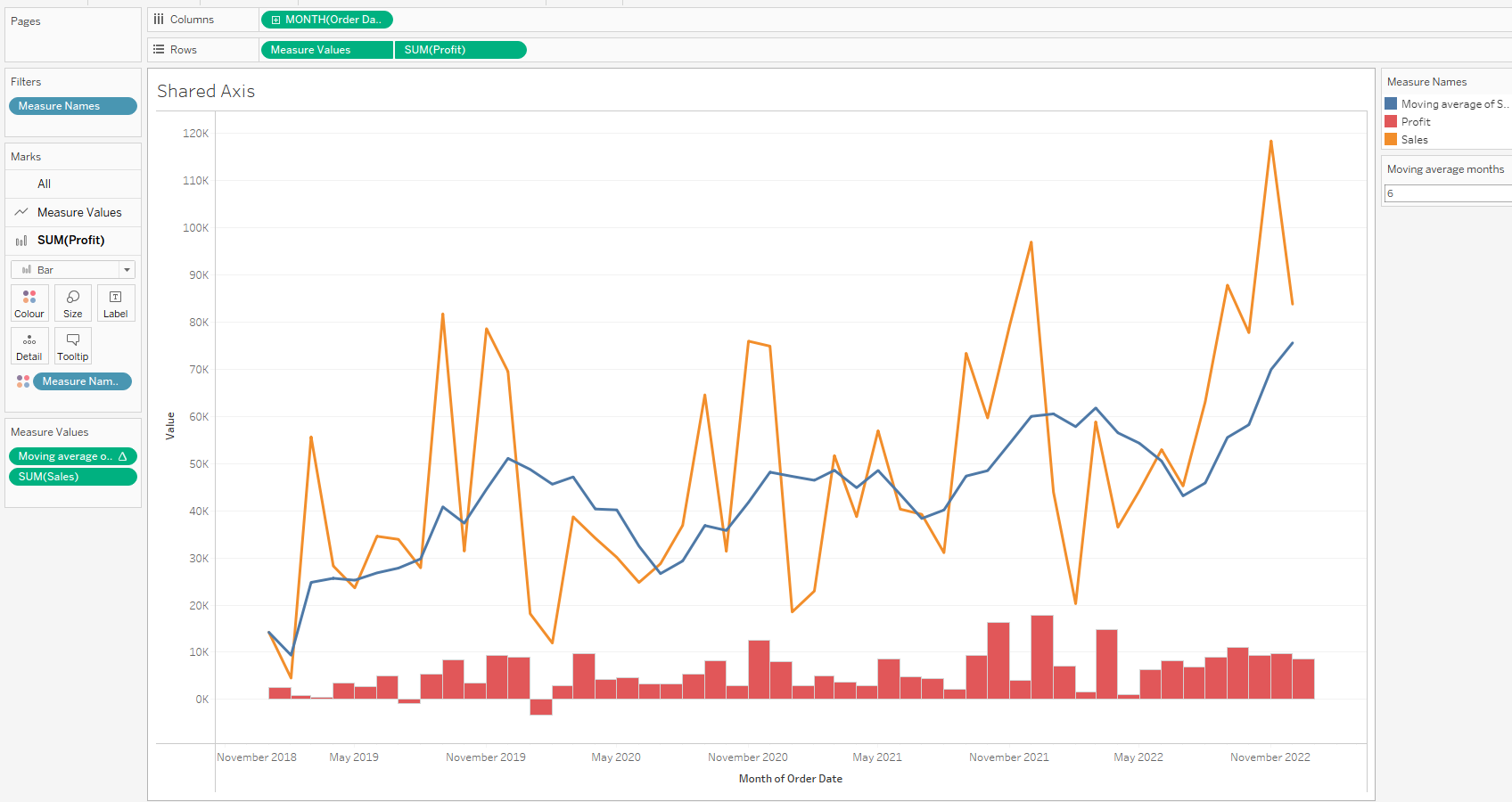
Although, having all measures on the same marks card can be seen as an advantage, as it would require less steps to modify them (add labels, change the type and so on). As the main disadvantage is just the freedom which was taken away by multiple marks cards.
